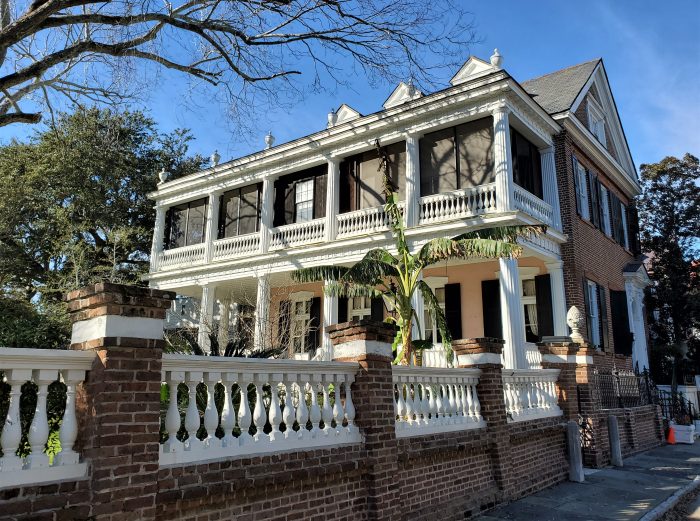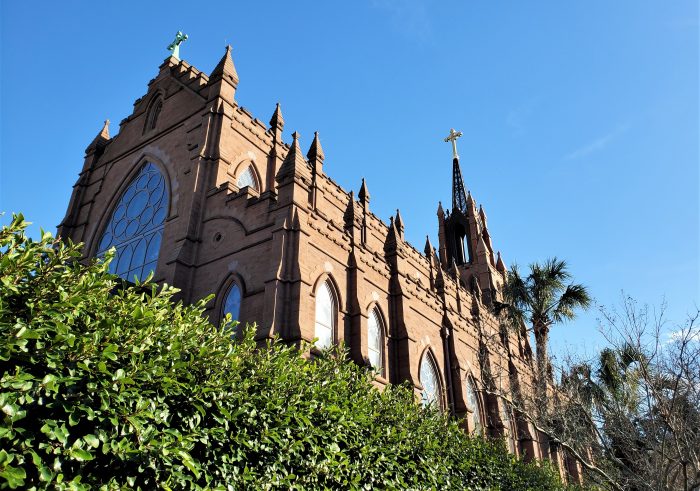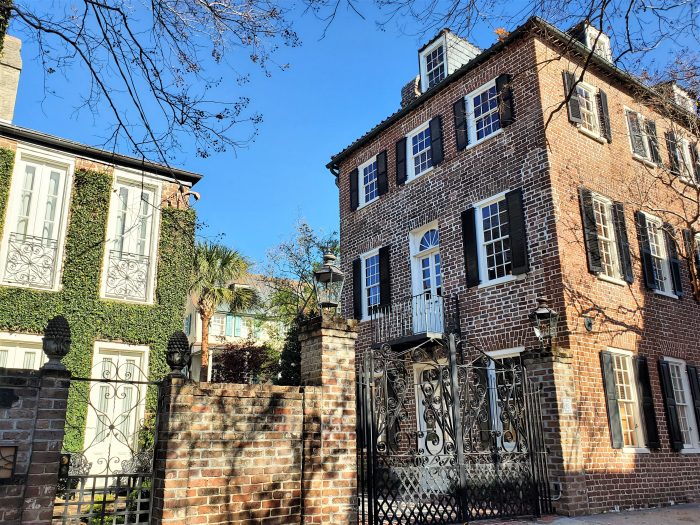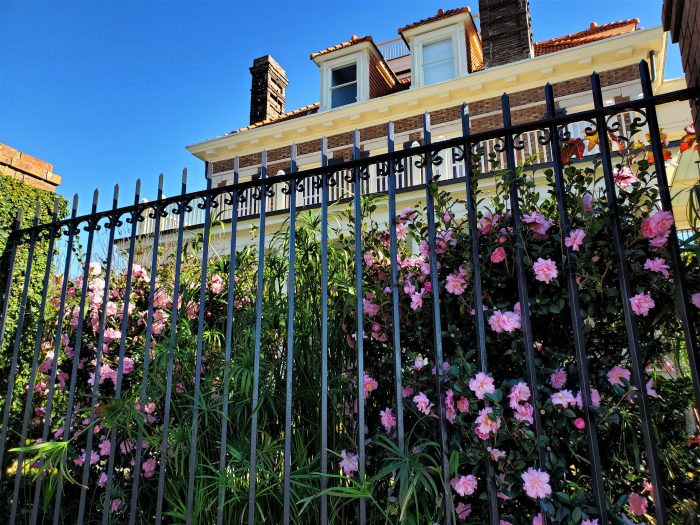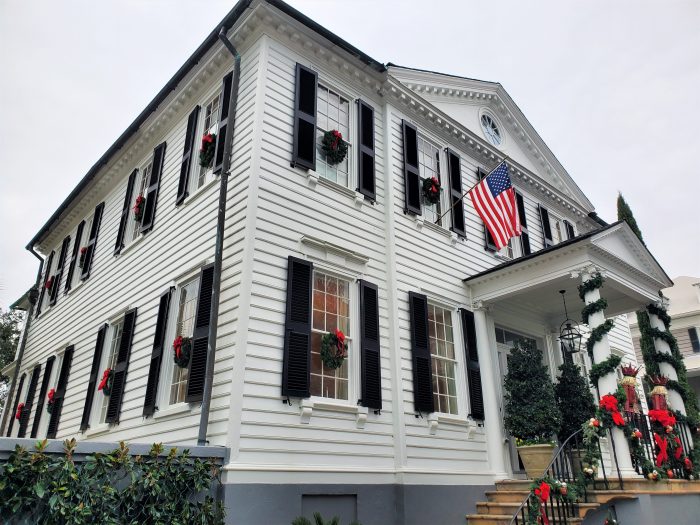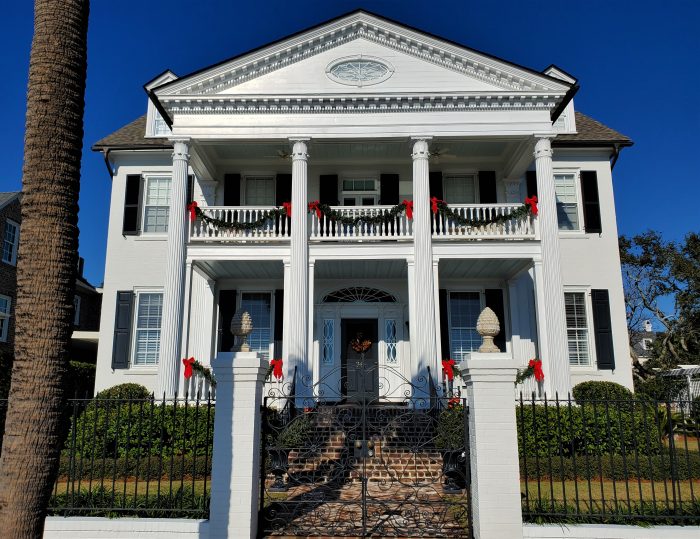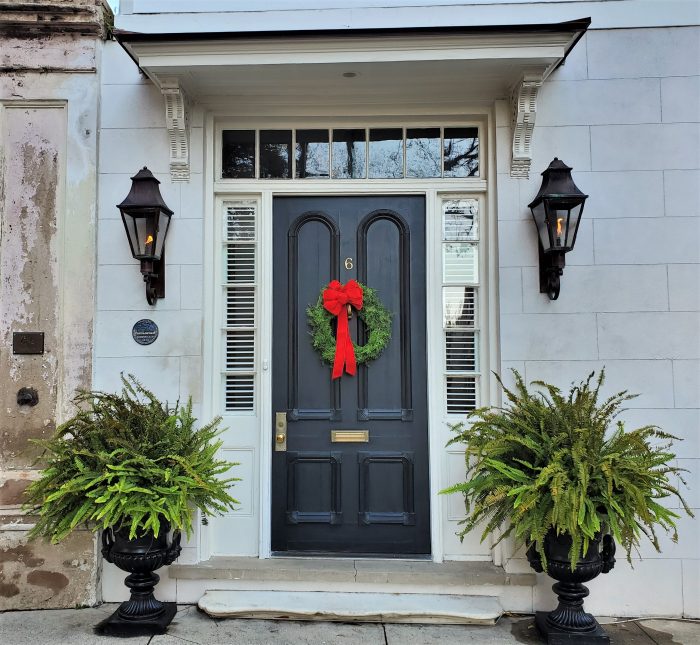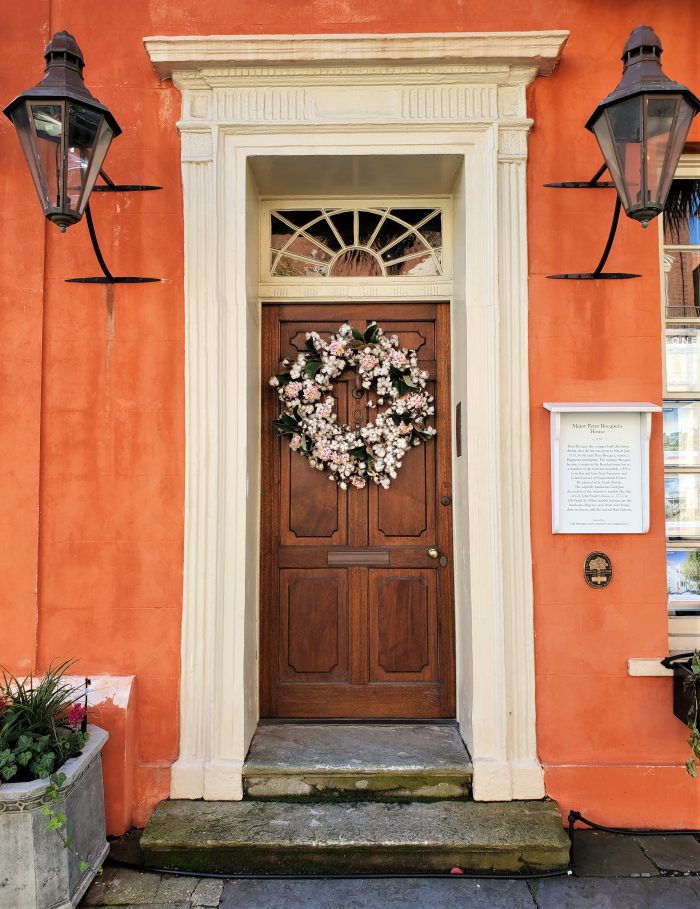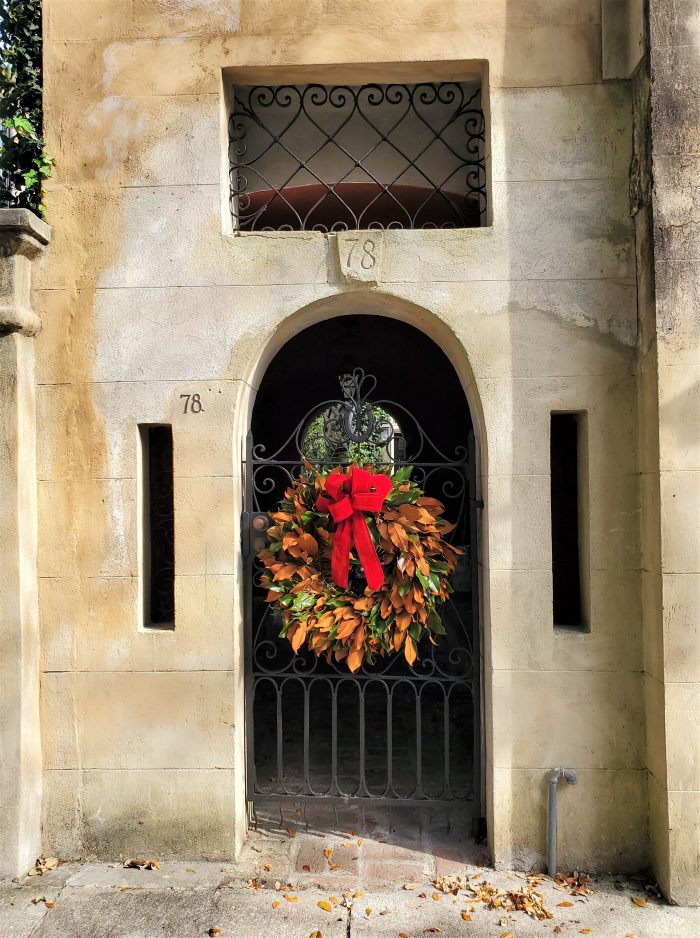This beautiful house on Limehouse Street was built by a wealthy cotton factor in 1857. It used to have a water view, as the original seawall ran in front of it.
Cathedral of St. John the Baptist
The cornerstone for the Cathedral of St. John the Baptist on Broad Street was laid in 1890. The construction of the church was finally completed in 2010, when the steeple was added. The Cathedral itself was opened, however, in 1907.
Layers of Charleston
This layered view of Charleston is along Tradd Street, just before the corner of King Street. Across the street is a house that was built in 2003. Before that, one of the last businesses operating South of Broad was located there — a gas station (the Fort Sumter Filling Station) that was built in the 1930’s.
Murray’s First
These beautiful camellias are at the C. Bissell Jenkins House on Murray Boulevard. Jenkins was the originator of the reclamation project that led to the completion of Murray Boulevard and the Low Battery. His house was the first built there.
Orange
A wonderfully decorated house on Orange Street. The house was built in 1769 by Charles Pinckney, who was the father of the Charles Pinckney who was a signer of the US Constitution, and also a governor of SC, a US senator and a member of the House of Representatives.
Front Battery
A 1938 house on Murray Boulevard, facing the Ashley River, all dressed up for the season.
Bull!
This handsome house on Bull Street, built c. 1802, was once owned by Nicholas Harleston, whose family the Harleston Village neighborhood is named.
Legare Entrance
This beautiful front door scene, complete with some cool gas lights, is on Legare Street.
Broad Street Cotton
This pretty cotton ball wreath hangs on a door that fronts Broad Street… just down from the intersection of Broad and Meeting Streets, where a drawbridge once stood to allow people to enter the walled city of Charles Towne.
Holiday Gate
This nicely decorated gate belong to a house that was built in 1785 on Church Street.
- « Previous Page
- 1
- …
- 49
- 50
- 51
- 52
- 53
- …
- 188
- Next Page »
